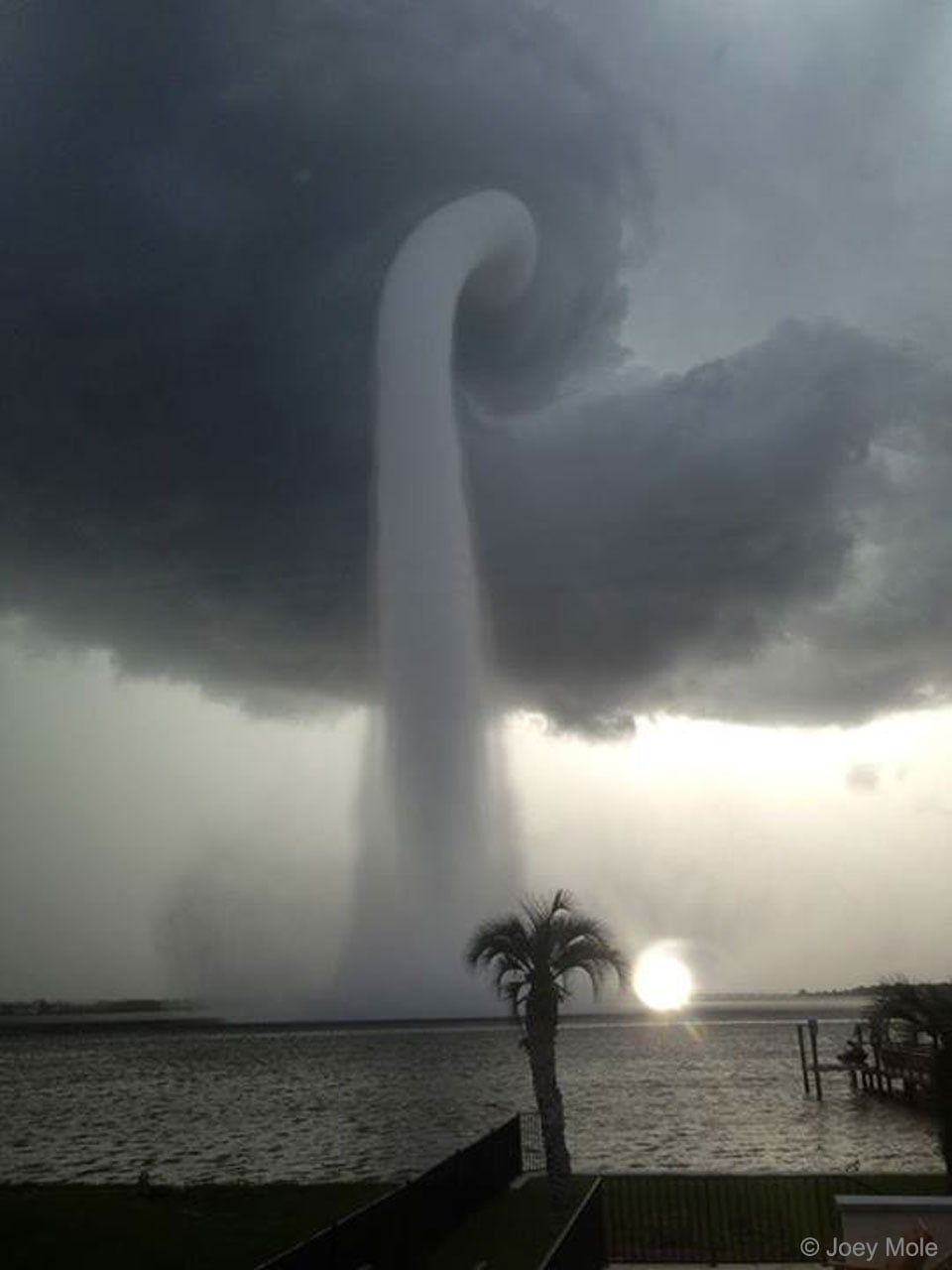This dramatic image shows a waterspout formed off the coast of Florida. Waterspouts come in two varieties: tornadic and fair-weather. Both types can be dangerous to anyone caught up in them, though the tornadic variety, which are usually associated with severe thunderstorms, is generally worse. Tornadic waterspouts can form top-down from a thunderstorm or when a tornado moves from land to water. Fair-weather waterspouts, on the other hand, typically form from the bottom, in a similar fashion to dust devils and other fair-weather vortices. (Image credit: J. Mole; via APOD)
Tag: waterspout

Waterspouts
Despite their ominous appearance, these waterspouts – like most of their kind – are fair-weather phenomena unrelated to tornadoes. They can form when cold, dry air moves over warm waters. As warm, moist air rises from the water’s surface, air is drawn in from the surroundings to replace it. Any vorticity in that air comes with it, growing stronger as it gets pulls in, thanks to conservation of angular momentum. That action creates the waterspout, which becomes visible when the warm, humid air cools enough to condense and form a cloud wall. (Image credit: R. Giudici; via EPOD)

From Firenado to Water Spout
Just a few years ago, fire tornadoes were almost fabled because they were so rarely captured on video. Now, with worsening wildfire seasons and cell phone cameras everywhere, there are new videos all the time. This video captures a fire tornado that sets off a water spout as it reaches the river (~1:15 in).
Neither the fire tornado or the water spout is truly tornadic; instead they are more like dust devils. They are driven by the rising heat of the fire. As cooler, ambient air flows inward to replace the rising air, it brings with it any vorticity it had. And, like an ice skater, the incoming air spins faster as it moves inward. This sets up both the fire tornado and the water spout’s vortices.
Although this is the first example I’ve seen video of, fire tornadoes have been known to create water spouts before. Lava flowing into the ocean can create whole trains of them. (Video credit: C. & A. Mackie; via Jean H.)

Lava-Driven Waterspouts
Seven waterspouts align as lava from the Hawaiian volcano Kilauea pours into the ocean in this striking photo from photographer Bruce Omori. Like many waterspouts–and their landbound cousins dust devils–these vortices are driven by variations in temperature and moisture content. Near the ocean surface, air and water vapor heated by the lava create a warm, moist layer beneath cooler, dry air. As the warm air rises, other air is drawn in by the low pressure left behind. Any residual vorticity in the incoming air gets magnified by conservation of angular momentum, like a spinning ice skater pulling her arms in. This creates the vortices, which are made visible by entrained steam and/or moisture condensing from the rising air. (Photo credit: B. Omori, via HPOTD; submitted by jshoer)

Waterspouts
Waterspouts are commonly thought of as tornadoes over water, but this is only partially true. Some waterspouts do begin as tornadoes, but waterspouts are more commonly non-tornadic or fair-weather in origin. These non-tornadic waterspouts form when cold, dry air moves over warm water. As the warm, moist air rises, entrainment and conservation of angular momentum cause the air nearby to begin rotating. The spout does not actually suck water up from the surface. Instead, the humid rising air cools and the water vapor condenses, forming the cloud wall of the spout. Waterspouts are typically very short-lived and last 5 to 10 minutes before the inflowing air cools and the vortex weakens and dissipates. (Photo credit: U.S. Navy/K. Wasson)




